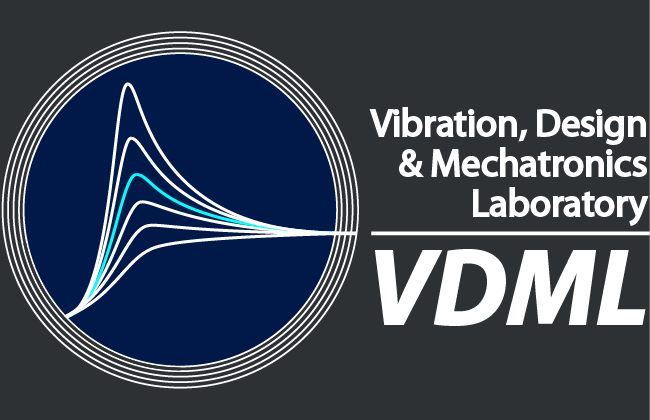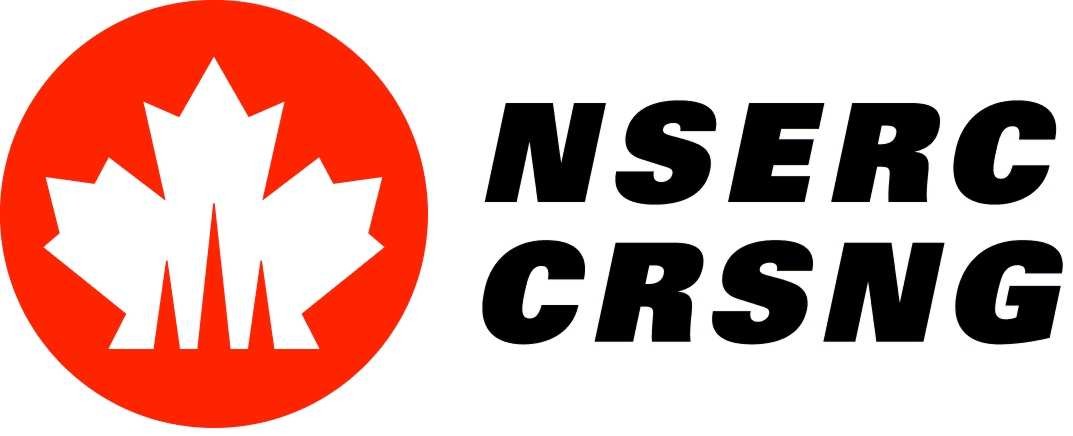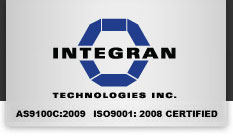Current Projects
Design and Development of Broadband Vibration-based Energy Harvesters
Piezoelectric Energy Harvesting is the most promising solution to convert vibration energy into electricity regarding the power density and cost. Traditional piezoelectric energy harvesters (PEHs) suffer from narrow bandwidth and uni-directional sensitivity. We have designed and developed several PEHs, including buckled-beam PEHs, dual-beam magnet-induced PEHs, compliant PEHs, and multiple-stage magnifying PEHs, to achieve broad bandwidth and high output. Energy harvesters can be used to power wireless sensors, implantable devices and other low-power electronic devices
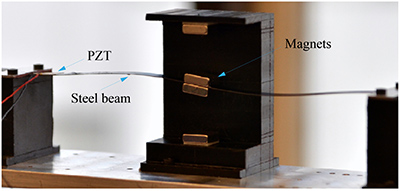
|
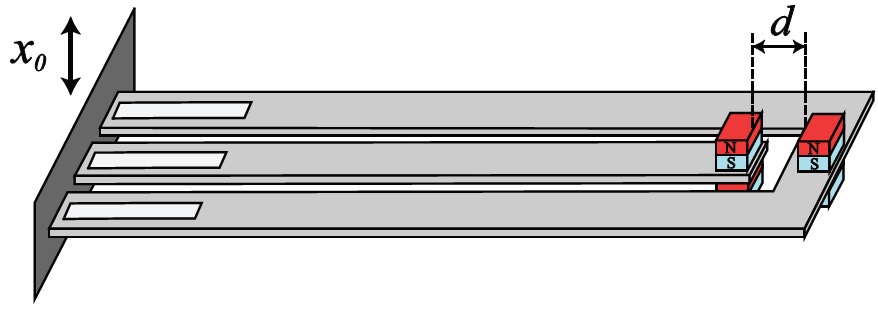
|
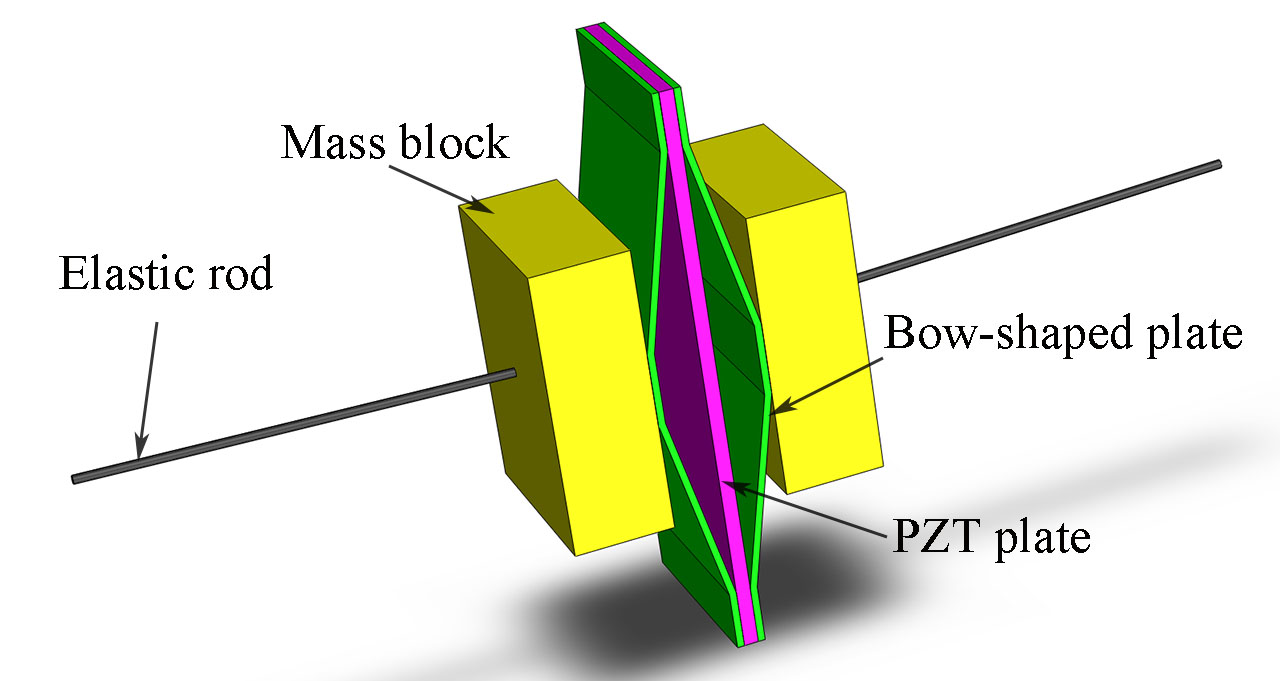
|
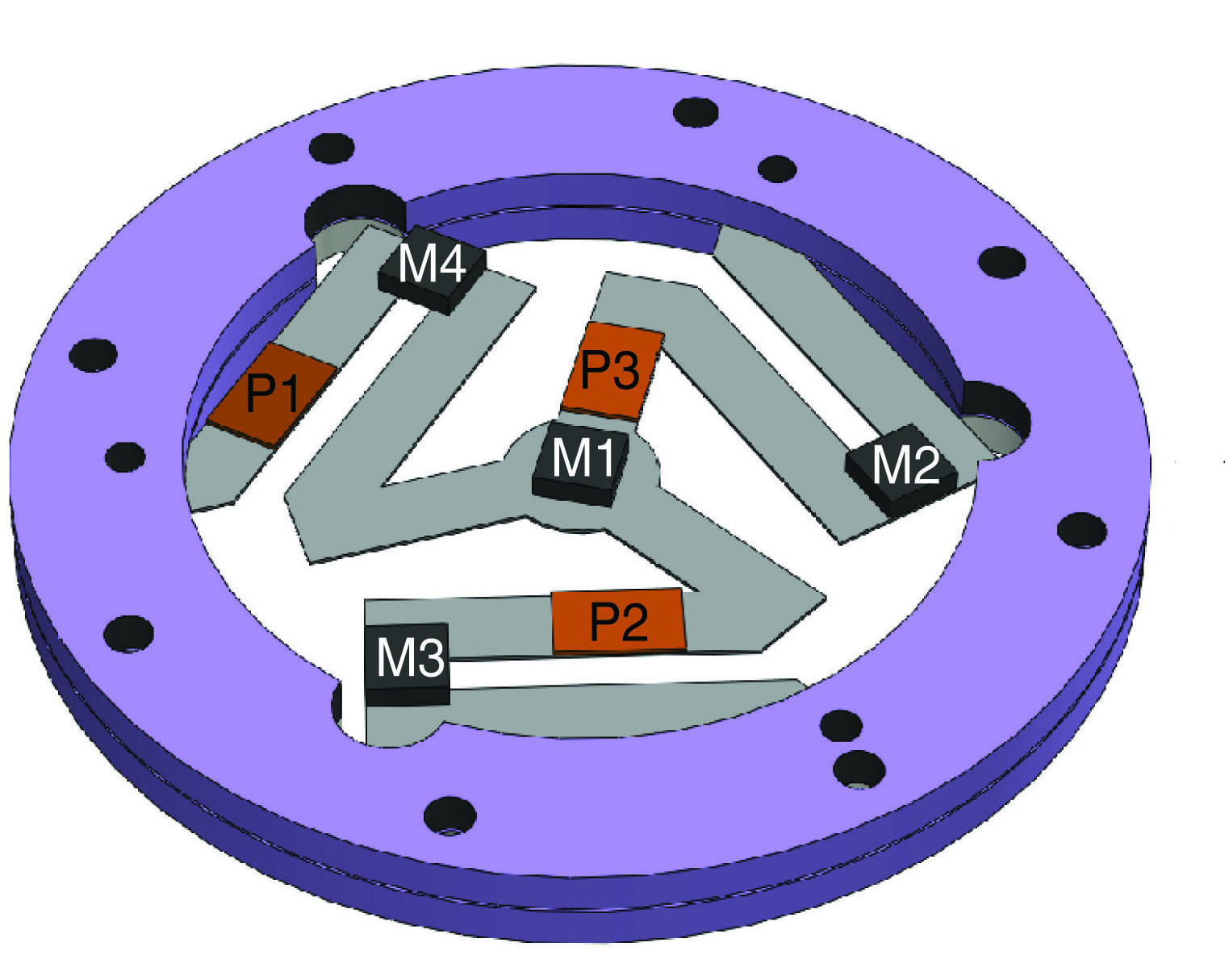 |
Triboelectric Nanogenerators (TENGs) for Ocean Wave Energy Harvesting, Self-Powered flexible Electronics and Harsh Environments such as Dry areas, Arctic areas, contaminated areas
Triboelectric nanogenerators (TENGs) are promising devices for power generation due to their diverse working mode, low cost, small size, high power density, various design, and fabrication materials. The ocean wave energy is one of the most advantageous clean and renewable energy sources due to its broad distribution, large-scale amount and less dependence on weather, temperature, time etc. The tremendous output of the TENG makes it possible for harvesting large scale energy derived from ocean wave. A notable technological trend in today's society is the rapid growth of mobile and portable electronics for applications in communication, personal health care, and environmental monitoring. Flexible (FTENGs) nanogenerators that efficiently convert mechanical energy into electrical energy have been extensively studied because of their great potential for driving low-power personal electronics and self-powered sensors. Integration of flexibility and stretchability to (FTENGs) nanogenerator has important research significance that enables applications in flexible/stretchable electronics, organic optoelectronics, and wearable electronics. The Triboelectric nanogenertors (TENGs) has been proved as a simple, reliable, cost-effective, and efficient means to harvest ambient mechanical energy in both normal and extreme environments. Applicability of TENGs over a wide range of temperature (77K to 320K) and pressure (750.06 Torr to 50 Torr) is confirmed. This applicabity opens a new areas for TENGs to be used in extreme environments.
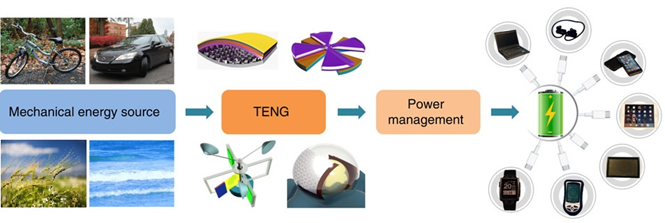 |
Fatigue Assessment and Belt Span Dynamic Tension Measurement in Front End Accessory Drive Systems
The front end accessory drive (FEAD) system is a belt drive system through which the crankshaft supplies power to engine accessory components such as the alternator, power steering, air conditioner, etc. Rotational irregularities of the crankshaft lead to accessory belt and component vibration, undesired noise, and increased fuel consumption. The dynamic loads generated by crankshaft acceleration and deceleration are transmitted to the accessory components through the belt. Therefore, FEAD components are subjected to inevitable cyclic loading which consequently promotes fatigue and failure of the components. Furthermore, innovations have increased the complexity of accessory components leading to elevated demand for belt span dynamic tension measurement methods. It is essential that these measurement methods employ non-contact sensors to avoid disruption of the system's typical behaviour.
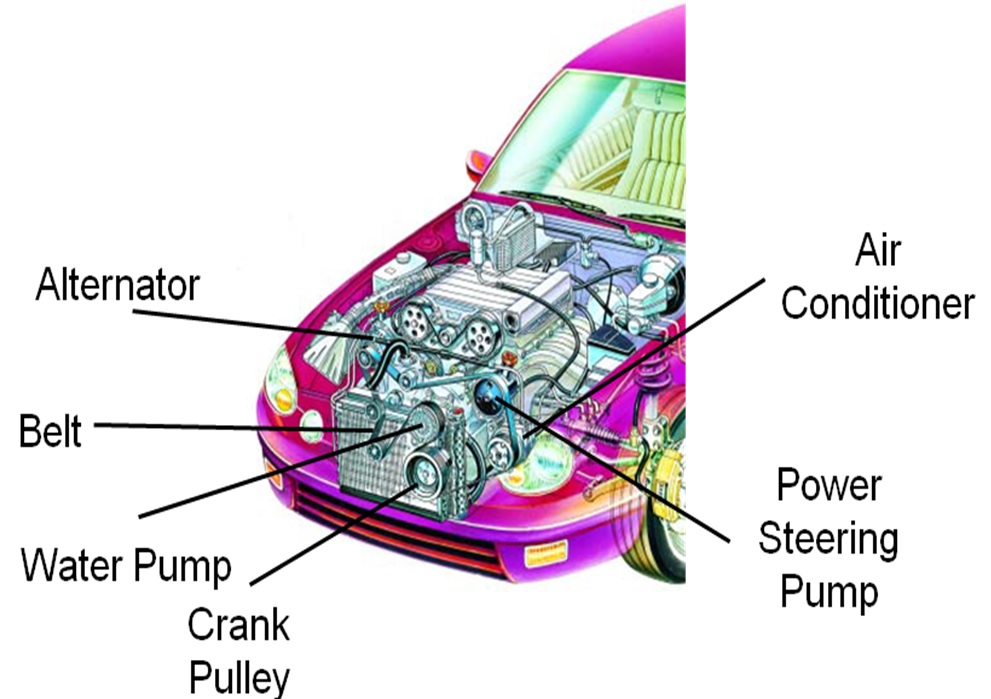 |
 |
High-performance actuation systems
Innovative actuation systems with high power and high speed have been designed and developed for various applications. The high-performance actuation systems have many advantages over the existing actuation systems: higher load capacity, smaller dimensions, and good controllability. These performance characteristics make the designed actuation system an excellent candidate in applications requiring fast transient response, high precision, and high load capacity such as electromagnetic valve actuators for engines, high speed pick and place, and precise positioning.
 |
Development of Vibration-Assisted Machining System
Vibration assisted machining technology introduces controlled vibration in the machining process. Because of the periodical separation of tool tip and the work piece, the lower cutting force and better surface finishing quality could be achieved, which renders its ability in micromachining. Currently, converse piezoelectric effect is the most commonly used mechanism in introducing vibration. However, brittle nature of piezoelectric materials would weaken the stability of whole system. Thus, there is eagerness to develop a new smart system based on different mechanism to increase robustness.
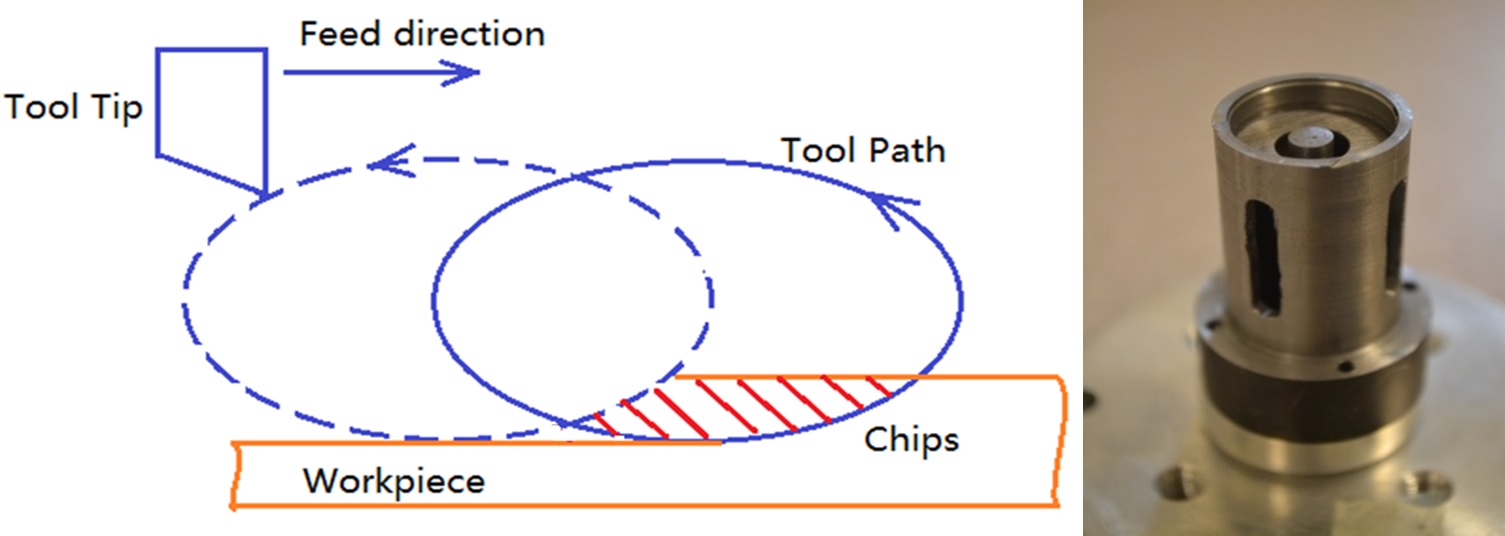 |
Damage propagation in the PEM Fuel cells
The polymer electrolyte membrane (PEM) fuel cell has been recognized as a promising power technology with zero-local emissions for portable, mobile, and stationary applications. It has the potential to provide clean electrical energy with high power density, low operating temperatures, quiet operation, fast start-up and shutdown, and high overall efficiency. However, commercial success of PEM fuel cells highly depends on the durability and reliability of the cell layers, particularly the mechanical damages in the membrane electrode assembly (MEA). In VDML we investigate and control the mechanisms that are involved in the damage initiation and propagation in the PEM fuel cell.
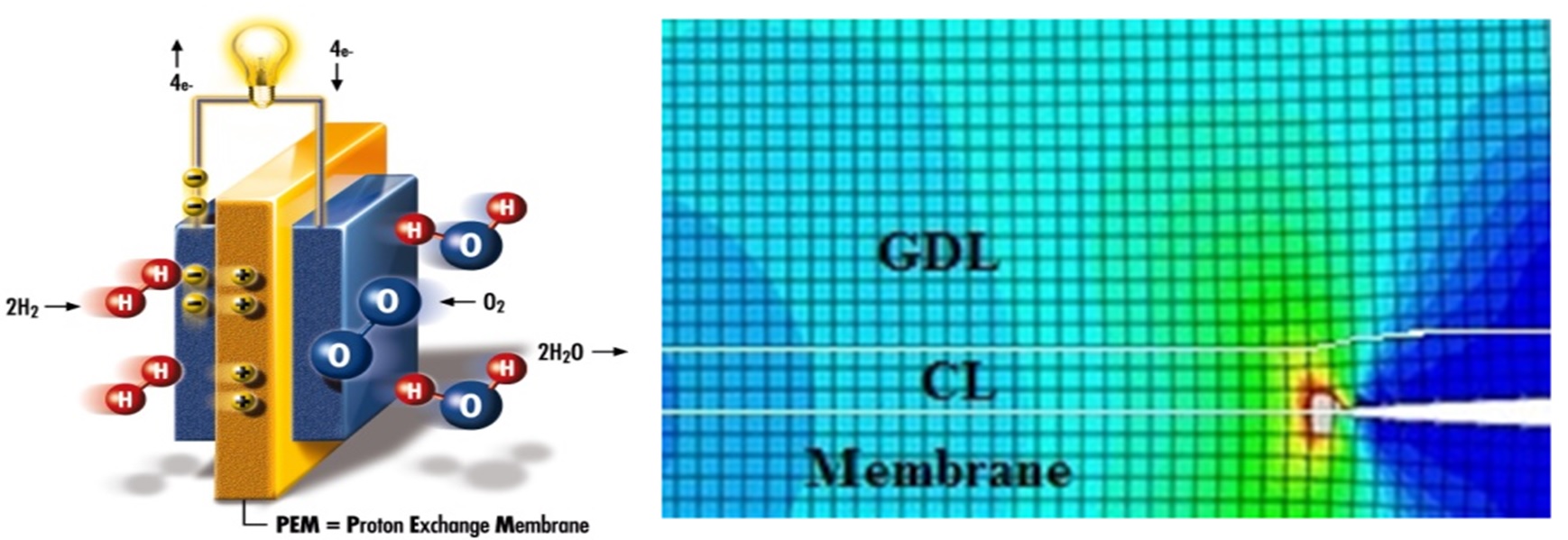
|
Aeolian Vibration of Overhead Transmission Lines
Aeolian vibration of overhead transmission lines is a wind-induced high-frequency low-amplitude vibration. When left uncontrolled, this type of vibration can result in serious accidents causing injuries and death, and/or considerable economic loss. The vibration of the conductor produces alternating bending stresses and tensile stresses in the vicinity of the clamps. Eventually, this leads to fatigue damage of the conductor in the form of broken strands in the outer layers, usually at the point of contact such as suspension clamps. Aeolian vibration being a challenge to transmission design engineers, it is worthwhile to further study conductor vibration in order to predict the dynamic of conductors and dampers which will enable transmission line design engineers to justify increasing the tension in the conductor, and optimize the selection, number, and location of dampers.
 |
Microstructure evolution and thermo-mechanical properties of shape memory alloys under dynamic loading conditions
The shape memory alloys (SMAs) have unique properties of recovering their original shapes under thermal and mechanical loadings. SMAs exhibit complex microstructure morphology which evolves at the speed of sound. It is difficult to observe the high speed phenomena experimentally. The experimental observations are even more challenging under dynamic loading conditions where strain rate effects play an important role. The phase-field model is a good tool to study a microstructure evolution and its associated thermo-mechanical properties under multi-axial dynamic loading conditions. An insight into the underlying physics under complex dynamic loading conditions would assist in the better development of SMA based macro-, micro-, and nano- scale actuators, sensors and transducers.
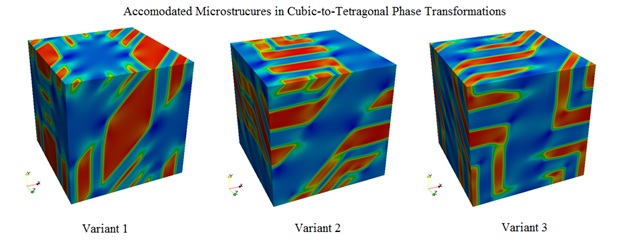 |
Past Projects
- Theoretical Modelling and Experimental Verification of Intermolecular Forces Considering the Surface Roughness.
- Optimal Design of Optical Fibre Couplers.
- Substrate and Fibre bundles modelled as beam and string/beam coupled at bonding points
- Tension in fibres varying with time resulting in nonlinear effect
- Finite element analysis to predict the displacement and stresses of fibres
- Optimization of coupler design
- Analysis and Software Development of Automotive Timing Belt Drive Systems
- Static analysis
- Free and forced vibration analysis
- Multi-frequency excitation analysis
- Transient vibration analysis
- Optimum Design of Tensioner Orientation for Belt-Tensioner Systems
- Both tensioner arm orientation and its damping being the design variables, and span tension variation minimum being the design objective
- Sensitivity analysis and design optimization
- Dynamic Analysis of Shaft--Rotor-Bearing Systems
- Dynamic analysis of shaft-rotor systems with viscoelastically supported bearings
- Stability analysis and steady-state solution of a rotor with nonlinear bearings
- Nonlinear coupling of torsional vibration and bending vibration of a rotating shaft
- Complex frequencies and modes of shaft systems incorporating both external and internal damping
- Control of High Speed and High Accuracy Piezoceramic Based Linear Motors
- Design and analysis of an inchworm piezomotor
- Neural network control for tracking of the inchworm piezomotor
- Dynamics and Control of Flexible Robot Payload Systems
- Dynamic modelling using component synthesis method
- Vibration reduction control
- Nonlinear Finite Element Analysis Using Time Integration Method
- Nonlinear Vibration Analysis of a Spinning Disk
- Inclusion of in-plane inertia in nonlinear coupled in-plane and transverse vibrations
- Nonlinear solution using canonical perturbation method
- Dynamics of Flexible Macro-micro Robots on a Flexible Base
- A modular formulation for macro/micro mnipulators
- Dynamics-based redundancy resolution
- Vibration Behavior of Papermaking Dewatering Fabrics
- Prediction of Stock Jump on the table of Fourdrinier machines
- Prediction of vacuum forces on the table of Fourdrinier machines
- Static and Dynamic Analysis of an Arm-Truck Garbage Collecting System
- Finite element analysis of the truck body
- Stress concentration
- Dynamics Analysis and Offset Predictions of Calender Stack Vibration in Papermaking Machines
- Comprehensive model for dynamic analysis developed
- Offset prediction using optimization
- Dynamic and Stability Analysis of Vehicles Carrying Liquid Cargo
